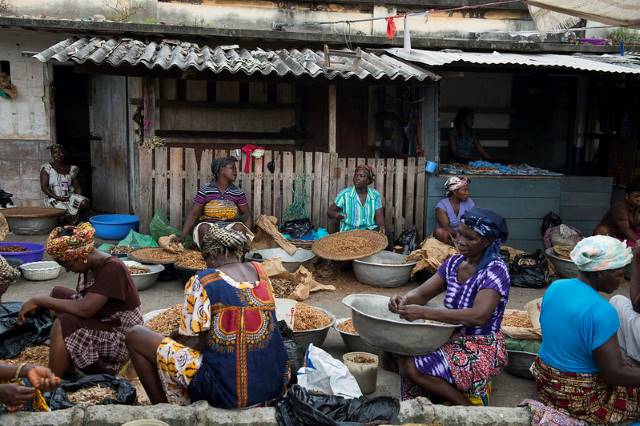Food Insecurity in Ghana
 Many consider Ghana “one of the most stable and democratic countries in West Africa.” However, poverty rates are high, standing at 25.5% in 2020, according to the World Bank. In the last 30 years, Ghana has made great progress in reducing poverty from a 49% poverty rate in 1990 to a 13% poverty rate in 2018. Still, inequalities exist between the north and south of the nation as well as between the urban and rural populations. During the lean season in 2020, the World Food Programme noted that more than 21,000 people suffered from food insecurity in Ghana, particularly in the northern region.
Many consider Ghana “one of the most stable and democratic countries in West Africa.” However, poverty rates are high, standing at 25.5% in 2020, according to the World Bank. In the last 30 years, Ghana has made great progress in reducing poverty from a 49% poverty rate in 1990 to a 13% poverty rate in 2018. Still, inequalities exist between the north and south of the nation as well as between the urban and rural populations. During the lean season in 2020, the World Food Programme noted that more than 21,000 people suffered from food insecurity in Ghana, particularly in the northern region.
Difficulties in Northern Ghana
Food insecurity in Ghana is more severe in the north of the country largely due to climatic issues. In the northern region, 90% of Ghanaian households depend on agriculture for their livelihoods, however, this region only has one rainy season in comparison to the south, which has two rainy seasons. This climatic difference impacts food production and worsens both poverty and food insecurity in Ghana’s north. Farmer also face other issues such as “low [market] prices, poor road infrastructure, lack of access to finance, inadequate markets, post-harvest losses, insufficient education and knowledge[and] unsustainable farming systems.” Due to an agricultural dependence among rural people, food insecurity and poverty largely affect rural populations.
The World Food Programme (WFP) Combats Food Insecurity in Ghana
The WFP’s work in Ghana, in general, focuses on four key areas to fight food insecurity in Ghana.
- Private Sector Collaboration. To address stunting and nutritional deficiencies, the WFP provided support to the private sector to supply and promote “affordable and safe fortified nutritious foods.” For example, the WFP gave technical and financial assistance to two companies and linked these manufacturers to local small-scale farmers. The two Ghanaian companies manufacture Tomvita and Maisoya, which are fortified foods that improve the nutrition of pregnant and breastfeeding women. The companies aim to extend production to supplemental foods for children.
- Nutritional Assistance. The WFP partners with various government institutions to fight against food insecurity in Ghana and address nutritional deficiencies. The partnership aims to ensure citizens consume nutritious local-based diets and learn behaviors conducive to good health. The WFP also supplies electronic vouchers to supplement the nutrition of pregnant or breastfeeding women and children younger than 2.
- Food System Resilience. The WFP connects small-scale Ghanaian farmers to local markets “to increase the availability, access and utilization of staples foods” such as “maize, millet, cowpeas and soybeans.” So far, the WFP has connected “10,000 smallholder farmers to two industrial agro-food processing companies that produce specialized blended nutritious foods.” The WFP also aims to strengthen the food supply chain and ensure proper “post-harvest facilities, technologies and services” to improve the quality and safety of foods.
- Policy-Making Assistance and Capacity Expansion. The WFP is offering its support and services to improve Ghana’s existing programs and develop policies that focus on combating malnutrition and establishing adequate food systems. This involves connecting Ghana’s national school feeding initiative to the country’s agricultural arena. The WFP helps Ghana to implement food security monitoring measures and establish guidelines to “improve food quality and safety and emergency preparedness.”
Impact in Numbers
According to a WFP Ghana Country Brief published in August 2021, for the year 2021 overall, the WFP aimed to help 45,000 people through nutritional assistance. In August 2021 alone, more than 4,500 people “received direct food assistance through vouchers.” If one looks at the gender proportions of beneficiaries, women formed 72% of the beneficiaries while men accounted for 28%. Moreover, in 2021, the WFP helped 22,020 small-scale farmers to increase their capacity and connect to markets.
Even though the WFP is seeing success in improving food insecurity in Ghana, worsening environmental conditions like drought stand as additional barriers to food security. Through ongoing support in strengthening the country’s food systems and resilience overall, Ghana can remain out of famine.
– Ander Moreno
Photo: Flickr
